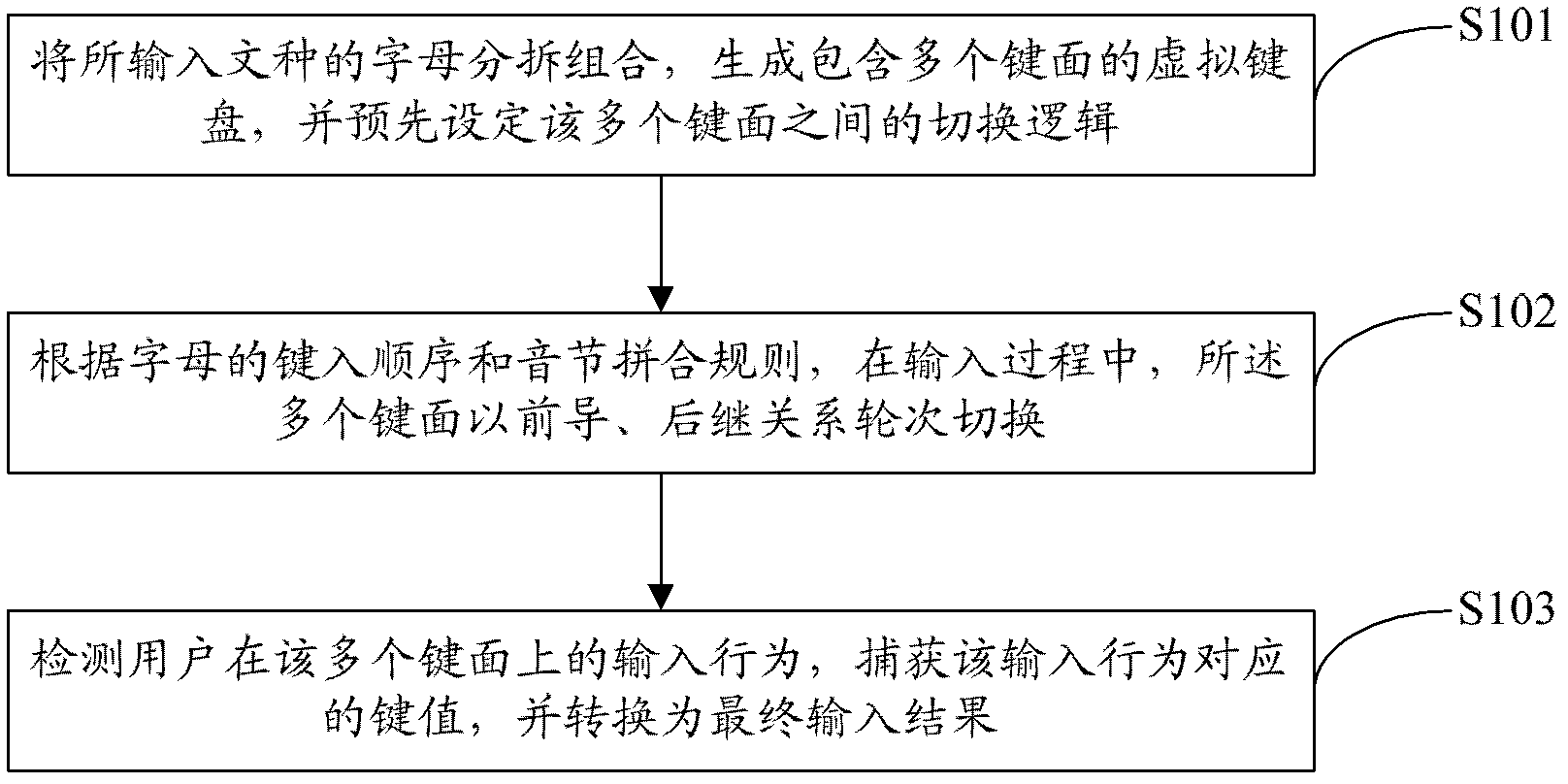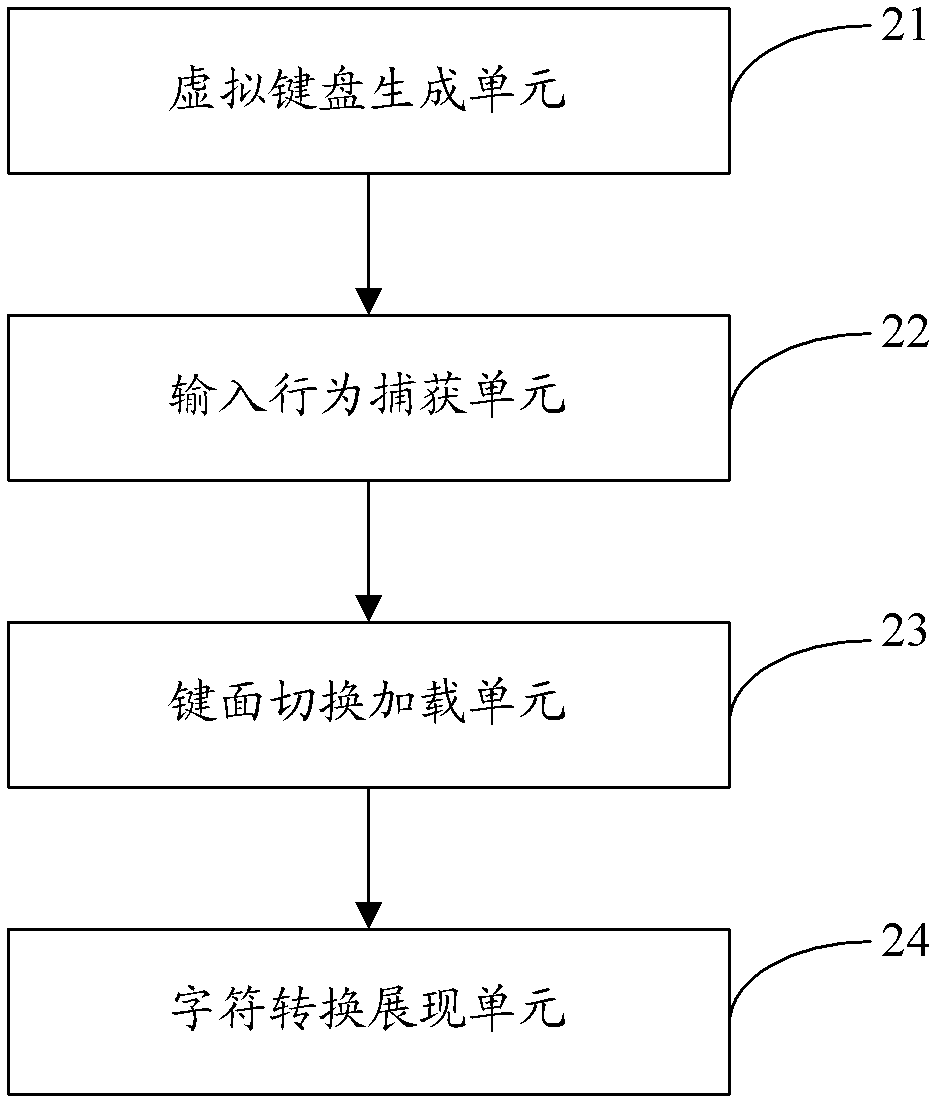Touch control input method, device and system
An input method and input technology, applied in the input field, can solve problems such as easy touch of keys by mistake, too many repeated syllables, low accuracy of syllable segmentation, etc., and achieve the effect of reducing the number of keystrokes
- Summary
- Abstract
- Description
- Claims
- Application Information
AI Technical Summary
Problems solved by technology
Method used
Image
Examples
Embodiment 1
[0081] The Chinese input method shown in this embodiment is based on the premise that it is suitable for finger touch. According to the screen area of most mobile devices at present, the size of each key is about 0.9cm*0.9cm. image 3 This is an example diagram of the keyboard layout of this input method when the mobile device is held vertically, in which there are six horizontal keys and four vertical keys, arranged in a grid system.
[0082] According to the syllable splicing rules of Mandarin, the syllable is divided into three parts: initial consonant, intermediary consonant and final consonant. Due to the long spelling pattern of Chinese Pinyin and the large number of keystrokes, in order to save the number of keystrokes, no matter how many letters the final vowel contains, only one key position is used, and one click is completed (each final vowel in the phonetic symbol is a letter , then there is no such problem). Some syllables start with a consonant or a final, and...
Embodiment 2
[0105] Tibetan is written in units of syllables, and each syllable is separated by a syllable node. A Tibetan syllable may be composed of pre-additional characters, upper-addition characters, base characters, lower-addition characters, vowels, and post-addition characters. Except for the basic characters, other letters or symbols may not exist. There are as many as 30 Tibetan consonant letters, which are traditionally classified into groups of four to form an alphabet. In this scheme, the basic characters of Tibetan are combined according to the traditional letter grouping, and each group is preset with a key. At the same time, according to the orthographic rules of Tibetan, all letters and symbols are split into three key surfaces:
[0106] The first key surface is the control character of the preceding addition, the upper addition, the base word, the syllable node, and the lower connection;
[0107] The second key surface is a vowel, one-key multi-word candidate key, commo...
Embodiment 3
[0128] The syllable structure of Japanese is relatively simple. According to the analysis method of traditional Chinese phonology, the syllable of Japanese can still be divided into two parts: initial consonant and final consonant. The initial consonant is a single consonant, and the finals can be expressed in five forms: single sound, dial sound, obtrusive sound, long sound, and impulsive sound. Combining Japanese consonants (such as combining voiceless consonants and corresponding voiced consonants into one key position) can reduce the number of keys to a range that can be accommodated by a single key surface. Simultaneously, also can select the most commonly used form in the final vowel (such as monophonic, obtrusive, dial tone, but not limited to) to form a final vowel key surface, thereby split Japanese Roman characters into two key surfaces. Figure 7 It is an example diagram of multiple key top layouts for Japanese Roman characters, including a first key top 71 and a se...
PUM
 Login to View More
Login to View More Abstract
Description
Claims
Application Information
 Login to View More
Login to View More - R&D
- Intellectual Property
- Life Sciences
- Materials
- Tech Scout
- Unparalleled Data Quality
- Higher Quality Content
- 60% Fewer Hallucinations
Browse by: Latest US Patents, China's latest patents, Technical Efficacy Thesaurus, Application Domain, Technology Topic, Popular Technical Reports.
© 2025 PatSnap. All rights reserved.Legal|Privacy policy|Modern Slavery Act Transparency Statement|Sitemap|About US| Contact US: help@patsnap.com



